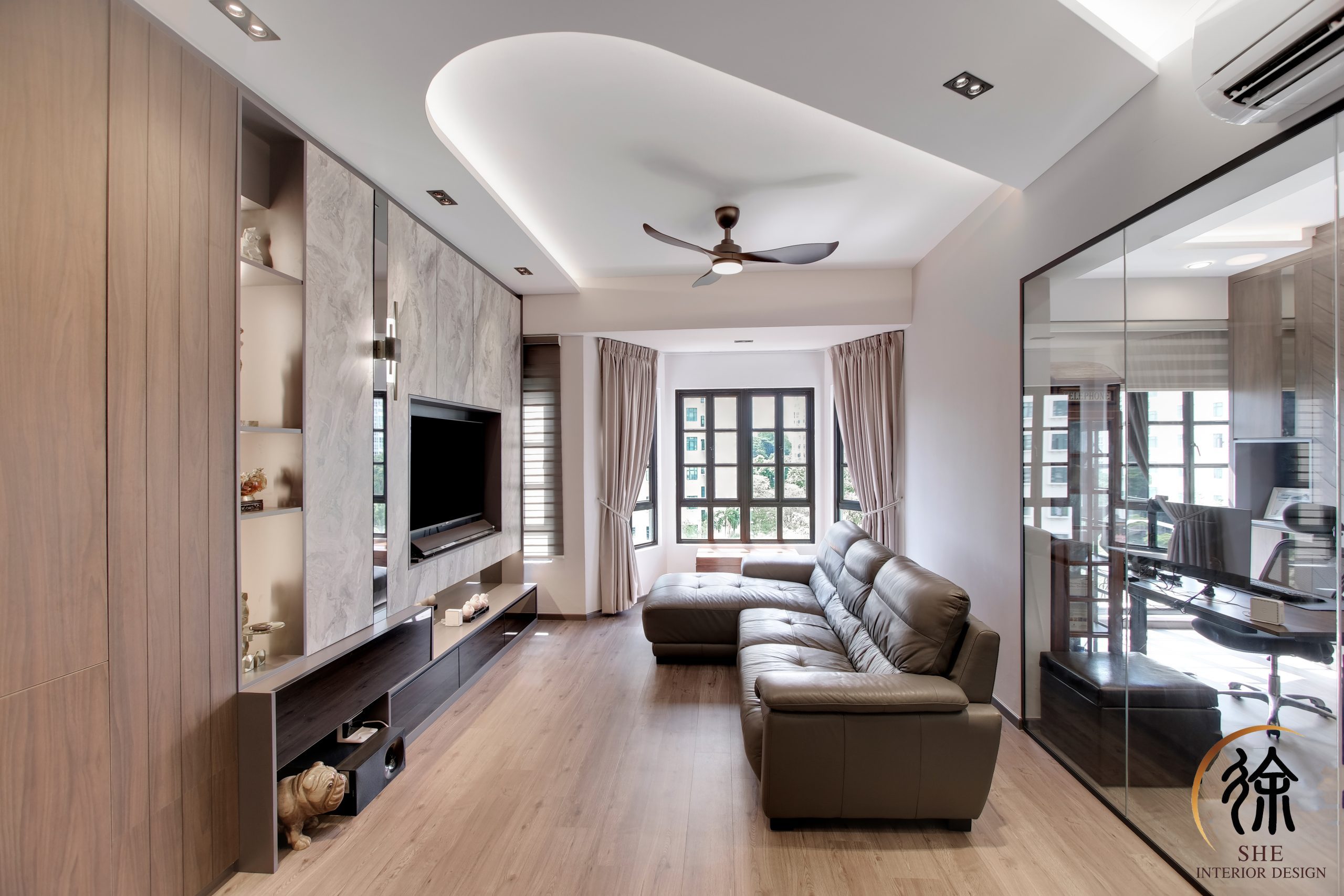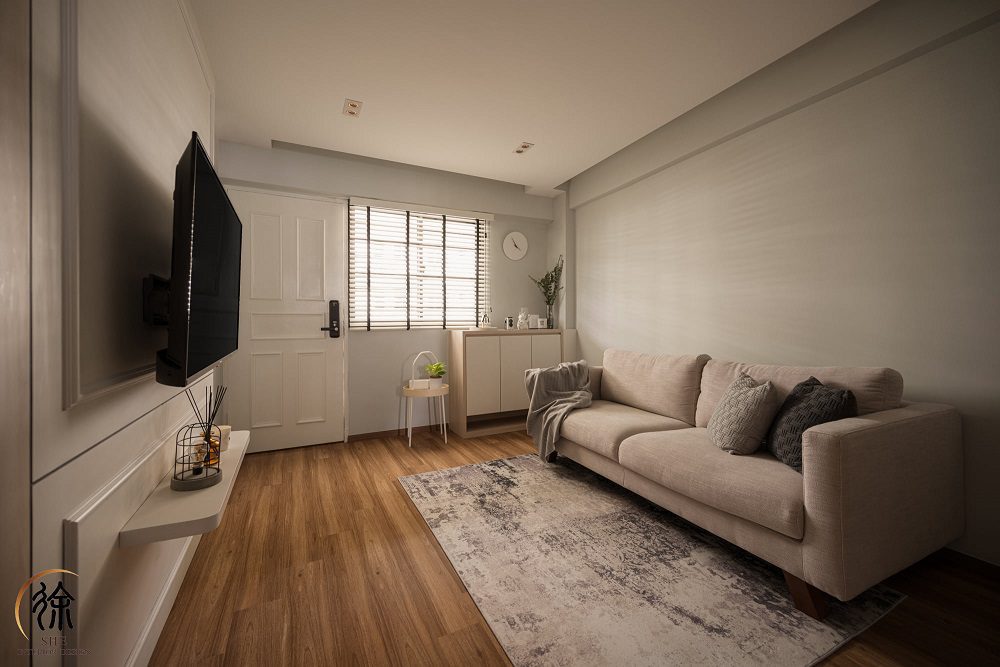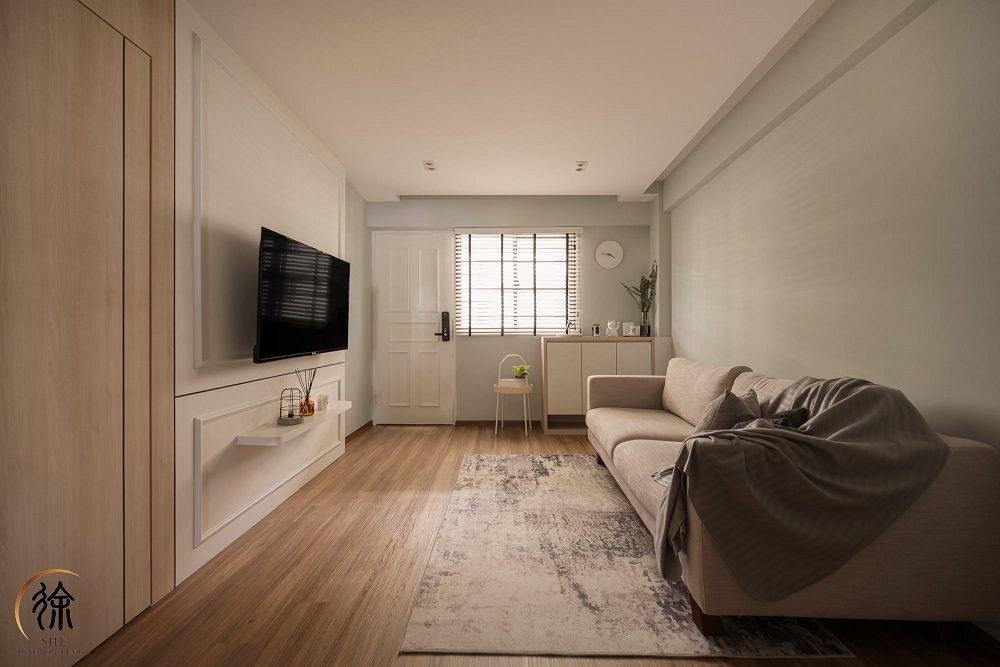Feng Shui, an ancient Chinese philosophy, has gained immense popularity in Singaporean culture. It is a belief that the arrangement and orientation of objects in our environment can affect energy flow and bring balance and harmony into our lives. When it comes to home renovation, incorporating Feng Shui principles can create a space that promotes positive energy flow and enhances overall well-being.
If you are planning a renovation project in Singapore, understanding how to design with harmony can be the key to creating a peaceful, inviting, and harmonious living space. In this article, we will delve into the principles of Feng Shui, offer tips on designing with harmony, discuss common mistakes to avoid, and explore how to find a reputable Feng Shui consultant.

Understanding Feng Shui
Understanding Feng Shui involves exploring its history and principles, the five elements, and the Bagua map’s application in home design.
1) History and principles of Feng Shui
- Feng Shui has been practiced in China for thousands of years and is based on the Taoist philosophy of living in harmony with nature.
- The principles of Feng Shui emphasize creating a balance between the five elements and promoting positive energy flow, or “chi.”
- Key principles of Feng Shui include the importance of proper orientation, minimizing clutter, and balancing yin and yang energies.
2) The five elements and their significance
- The five elements of Feng Shui are wood, fire, earth, metal, and water.
- Each element has unique characteristics and can be used to enhance specific areas of a home.
- For example, wood is associated with growth and is often used in areas related to personal development and family relationships, while metal is associated with clarity and is often used in areas related to mental clarity, such as home offices.
3) The Bagua map and its application in home design
- The Bagua map is a tool used in Feng Shui to map out different areas of a home and their corresponding elements and energy flows.
- By using the Bagua map, homeowners can identify areas of their home that may be out of balance and make adjustments to enhance energy flow.
- The Bagua map is typically used in conjunction with other Feng Shui principles, such as color choices and furniture placement, to create a harmonious and balanced living space.
Designing with Harmony
Designing with harmony is crucial to incorporating Feng Shui into renovation projects. Here are some tips for creating a balanced and harmonious living space:
1) The importance of balance and harmony in Feng Shui
- Feng Shui emphasizes the importance of balance and harmony in creating a peaceful and harmonious living space.
- Design elements should be balanced, and furniture placement should promote the free flow of energy throughout the room.
- Creating a harmonious living space involves paying attention to both the physical and spiritual aspects of the environment.
2) Design tips for incorporating Feng Shui into renovation projects
- Start with decluttering and organizing the space to promote free energy flow.
- Choose color schemes that complement the Bagua map and create a harmonious balance of the five elements.
- Place furniture in a way that maximizes positive energy flow and balances the elements of the room.
- Incorporate natural elements, such as plants or water features, to promote positive energy and create a peaceful atmosphere.
- Light fixtures should be placed strategically to create a balance of yin and yang energies.

3) Color choices, furniture placement, and other considerations for optimal energy flow
- Color choices are essential to create a harmonious living space. For example, blue and green are associated with water and wood elements, respectively, and can be used to create a calming and peaceful atmosphere.
- Furniture placement should promote free energy flow and balance the elements of the room. For example, placing a mirror opposite a window can reflect natural light and promote positive energy flow.
- Other considerations, such as lighting and artwork, can also play a role in creating a harmonious living space. For example, soft lighting can promote relaxation, while artwork should be carefully chosen to complement the overall color scheme and promote positive energy flow.
Feng Shui for Different Spaces
Applying Feng Shui principles to different spaces can create a harmonious and balanced living environment. Here are some tips for applying Feng Shui principles to different areas of your home:
1) Living Spaces
- Living spaces should be open and inviting, with comfortable seating arrangements that promote socialization and relaxation.
- Consider incorporating natural elements, such as plants or water features, to promote positive energy flow.
- Use lighting to create a balanced and peaceful atmosphere.
2) Bedrooms
- Bedrooms should be a peaceful retreat, with a comfortable bed placed in a commanding position that allows for maximum positive energy flow.
- Avoid clutter and keep the space clean and organized to promote a restful and peaceful atmosphere.
- Use calming colors, such as pastels or muted earth tones, to promote relaxation and tranquility.
3) Kitchens
- Kitchens should be clean and organized, with a focus on promoting positive energy flow and minimizing clutter.
- Use natural materials, such as wood or stone, to promote balance and harmony.
- Consider using lighting to create a bright and welcoming atmosphere.
4) Workspaces
- Workspaces should be free of clutter and distractions to promote productivity and mental clarity.
- Use natural lighting, if possible, to create a bright and welcoming atmosphere.
- Incorporate natural elements, such as plants or a small water fountain, to promote positive energy flow.
5) Outdoor Spaces
- Outdoor spaces should be designed to promote relaxation and tranquility.
- Use natural elements, such as plants or water features, to promote positive energy flow.
- Consider incorporating seating areas and outdoor lighting to create a peaceful and inviting atmosphere.

Common Feng Shui Mistakes to Avoid
While incorporating Feng Shui principles into your renovation project can be beneficial, there are also common mistakes that can detract from its effectiveness. Here are some common misconceptions and mistakes to avoid:
1) Misconceptions about Feng Shui
- Feng Shui is not a religion: While some people associate Feng Shui with spirituality or religion, it is actually a practice based on principles of energy flow and balance.
- Feng Shui is not magic: While Feng Shui can be powerful in creating a harmonious living environment, it is not a magical solution to all of life’s problems.
- Feng Shui is not a one-size-fits-all solution: Every space is unique, and Feng Shui principles must be customized to fit the specific needs and goals of each individual.
2) Common mistakes to avoid
- Overdoing it: Trying to incorporate too many Feng Shui principles can result in a cluttered and unbalanced space. Focus on a few key principles that are most important to you.
- Ignoring practicality: While it’s important to incorporate Feng Shui principles, it’s also important to consider the practical aspects of your renovation project. Make sure your design choices are functional and comfortable.
- Placing too much emphasis on aesthetics: While it’s important to create a beautiful living environment, aesthetics should not be the sole focus of your renovation project. Make sure you are also prioritizing energy flow and balance.
- Ignoring your intuition: While it’s important to follow Feng Shui principles, it’s also important to trust your own intuition and personal preferences. Don’t be afraid to make design choices that feel right to you, even if they don’t follow traditional Feng Shui guidelines.
Finding a Feng Shui Consultant
If you’re considering incorporating Feng Shui principles into your renovation project, it may be helpful to consult with a reputable Feng Shui consultant. Here are some tips for finding a qualified consultant in Singapore:
- Research online: Look for consultants with positive reviews and a strong reputation in the industry. Check their websites, social media pages, and online directories for information about their services and qualifications.
- Get referrals: Ask friends, family, or colleagues who have worked with a Feng Shui consultant for recommendations. Personal referrals can be a great way to find a trusted consultant.
- Check their credentials: Look for consultants who have received training from a recognized Feng Shui organization or have relevant certifications.
- Schedule a consultation: Once you’ve found a potential consultant, schedule a consultation to discuss your renovation project and learn more about their approach to Feng Shui. During the consultation, you can ask questions, share your goals and concerns, and get a sense of their communication style and expertise.
Here are some things to expect from a consultation with a Feng Shui consultant:
- Assessment of your space: The consultant will evaluate your space, taking into consideration factors such as its location, layout, and orientation.
- Identification of problem areas: The consultant will identify areas of your space that may be disrupting the flow of energy and suggest ways to remedy these issues.
- Recommendations for improvement: Based on their assessment, the consultant will make recommendations for optimizing the energy flow and creating a harmonious living environment.
- Customized advice: A good consultant will provide personalized advice tailored to your specific needs and goals, rather than a one-size-fits-all approach.
To prepare for a consultation with a Feng Shui consultant, consider doing the following:
- Think about your goals: Consider what you hope to achieve with your renovation project and how you want your space to feel.
- Prepare questions: Write down any questions or concerns you have about Feng Shui and your renovation project.
- Share your vision: Be prepared to share your vision for your space with the consultant, including any design ideas or preferences you have.
- Keep an open mind: Be willing to consider new ideas and approaches to your renovation project, even if they differ from your original plans.
Renovate your house with SHEINTERIOR!
If looking specialist for a new interior design with 3D drawings process
SHEINTERIOR is the perfect solution for specialists looking for a new interior design with 3D drawing process. Our services include the entire project management process from conception to construction, including architectural and engineering services. SHEInterior is the perfect solution for all your interior design needs. Get your best home design plan and result with us! Contact us here for more information or visit our showroom at 21 Woodlands Close #09-43 Singapore 737854 (Primiz Biz-Hub).



